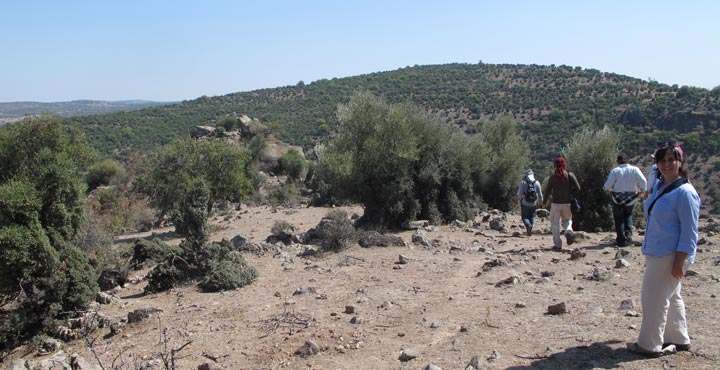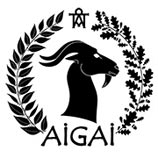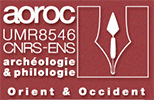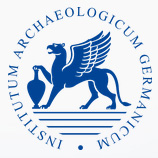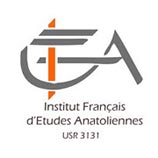About
FROM MONUMENTAL GRAVE MOUNDS TO URBAN NECROPOLEIS
The 'Archaeology of Death' in the Hellenistic period modern methodology, social relations and local identities in Pergamon and the Aeolian cities

The necropoleis and the great tumuli of Pergamon and the Aeolian cities of Aigai, Kyme and Elaia represent a valuable archaeological heritage for understanding the political, social and cultural dynamics in a key region of Hellenistic Asia Minor. They offer a wide range of sociological and historical contexts: on the one hand they provide information on every stratum of society, from the Attalid princes and the prosperous citizens to the more modest section of the population; on the other hand, the studied area offers a large variety of political, social and cultural situations: the residential city of Pergamon, Aigai (an old Aeolian Polis under strong Pergamenian influence), Kyme (the heart of the Aeolis, which long remained under Seleucid control), and Elaia (both an Aeolian city and the naval base of Pergamon).
This situation provides an ideal background to approach a series of questions that are under discussion in the scholarly milieu:
(1) Social structure in view of funerary practices and behaviors;
(2) The transformation of the forms of the urban ideological representations under the influence of the Hellenistic kingship;
(3) The cultural impact of the interactions between the capital of the Attalid kingdom and the autonomous poleis;
(4) The transformation of local identities and the circulation of ideological models from the Hellenistic Kingdoms in the 3rd and 2nd centuries BC.
Reconsider the archaeological documentation
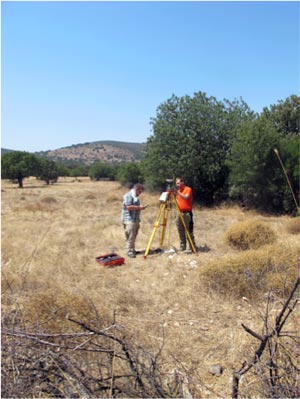 Following the most recent research, our aim is to approach funerary behaviors as a subtle and complex expression of the social, cultural and religious habitus that need to be tackled through new historical objectives and considered through their great diversity, both locally and regionally. In order to renew such approaches one first has to reconsider the archaeological documentation produced since the 1880s and create a collaborative French-German program with the teams already working in this area: the German archaeological team of Pergamon, the Aigai-Excavation of Ege Üniversitesi İzmir and the French archaeological mission in the Aeolis.
Following the most recent research, our aim is to approach funerary behaviors as a subtle and complex expression of the social, cultural and religious habitus that need to be tackled through new historical objectives and considered through their great diversity, both locally and regionally. In order to renew such approaches one first has to reconsider the archaeological documentation produced since the 1880s and create a collaborative French-German program with the teams already working in this area: the German archaeological team of Pergamon, the Aigai-Excavation of Ege Üniversitesi İzmir and the French archaeological mission in the Aeolis.
The project aims at developing a common strategy in order to enhance the exploitation of scientific data by combining the most innovative aspects of French and German research in funerary archaeology. Our goal is to constitute an interdisciplinary French-German-Turkish team that will be capable of intervening throughout this three-years project based on different sites of the region and that will also be able to develop collaboration with the other Turkish and foreign partners.
The case studies are the urban necropoleis of Aigai as well as the large tumuli of Pergamon and Kyme. Additionally older excavations at Kyme, Elaia and Pergamon are evaluated. A series of common methods will be applied by the main French-German team, including but not limited to: Remote sensing, geophysical and geoseismic survey; excavation of strategic areas, chosen after the result of the surveys, in the necropoleis and among the large mounds; double program of funerary anthropological studies (archaeo-thanatology and biological anthropology) and archaeometry analyses (physico-chemical and paleo-genetical) on unearthed remains; concerted archaeological and architectural studies leading to a joint archaeological-historical analysis and interpretation according to the main questions 1-4 (see above).
Annual interdisciplinary meetings
Fieldwork and laboratory analyzes will be accompanied by an interdisciplinary practical and theoretical training program for French, German, Turkish and foreign PhD students.The collaborative work will result in annual interdisciplinary meetings. The dissemination of the results will be carried out through joint publications of the preliminary reports and monographies, an international colloquium at the end of the program and the website dedicated to the NekroPergEol project. The conservation and the long-term presentation of the data will be operated by the iDAIfield system.
